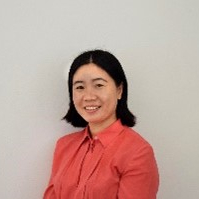Application of Membrane Materials in Bioseparation and Downstream Processing
A special issue of Membranes (ISSN 2077-0375). This special issue belongs to the section "Membrane Applications for Other Areas".
Deadline for manuscript submissions: 10 November 2025 | Viewed by 16386
Special Issue Editors
Interests: purification process and analytics development for biologics, vaccines, cell and gene therapy, and nucleic acid therapy; continuous and intensified downstream processing; process scaling up and technical transfer to GMP facility
Interests: nanostructured membranes; porous materials; membrane characterization
Special Issues, Collections and Topics in MDPI journals
Special Issue Information
Dear Colleagues,
In this Special Issue, authors are invited to submit original articles and reviews on the application of membrane materials in bioseparation and downstream processes. The contributions may concern (i) the development of new membrane materials with applications in bioseparation and downstream processes; (ii) the characterization of existing or new membrane materials with applications in bioseparation and downstream processes; (iii) the development of membrane materials for bioseparation and downstream processes; (iv) process optimization and scaling up to ulitize membrane materials for bioseparation and downstream processes; (v) the mechanisitic study of ulitizing membrane materials for bioseparation and downstream processes; (vi) the modelling of ulitizing membrane materials for bioseparation and downstream processes; (vii) the application of membrane materials to bioanalytics.
Dr. Wei Zhang
Prof. Dr. Lingxue Kong
Guest Editors
Manuscript Submission Information
Manuscripts should be submitted online at www.mdpi.com by registering and logging in to this website. Once you are registered, click here to go to the submission form. Manuscripts can be submitted until the deadline. All submissions that pass pre-check are peer-reviewed. Accepted papers will be published continuously in the journal (as soon as accepted) and will be listed together on the special issue website. Research articles, review articles as well as short communications are invited. For planned papers, a title and short abstract (about 100 words) can be sent to the Editorial Office for announcement on this website.
Submitted manuscripts should not have been published previously, nor be under consideration for publication elsewhere (except conference proceedings papers). All manuscripts are thoroughly refereed through a single-blind peer-review process. A guide for authors and other relevant information for submission of manuscripts is available on the Instructions for Authors page. Membranes is an international peer-reviewed open access monthly journal published by MDPI.
Please visit the Instructions for Authors page before submitting a manuscript. The Article Processing Charge (APC) for publication in this open access journal is 2200 CHF (Swiss Francs). Submitted papers should be well formatted and use good English. Authors may use MDPI's English editing service prior to publication or during author revisions.
Keywords
- membrane material
- membrane chromatography
- membrane filtration
- bioseparation
- downstream processing
- charactarization
- process development
- process optimization
- scale up
- mechnisitic study
- process modelling
Benefits of Publishing in a Special Issue
- Ease of navigation: Grouping papers by topic helps scholars navigate broad scope journals more efficiently.
- Greater discoverability: Special Issues support the reach and impact of scientific research. Articles in Special Issues are more discoverable and cited more frequently.
- Expansion of research network: Special Issues facilitate connections among authors, fostering scientific collaborations.
- External promotion: Articles in Special Issues are often promoted through the journal's social media, increasing their visibility.
- Reprint: MDPI Books provides the opportunity to republish successful Special Issues in book format, both online and in print.
Further information on MDPI's Special Issue policies can be found here.







